m (Text replacement - "|here=Home version comparisons" to "") |
Namcorules (talk | contribs) (nextpage=Trophies, per BrownDerby's newly-created addition) |
||
| (One intermediate revision by one other user not shown) | |||
| Line 1: | Line 1: | ||
{{Header Nav|game=Pac-Mania}} | {{Header Nav|game=Pac-Mania}} | ||
''Note: As with [[Pac-Land]], all of the conversions of this game that were published by Grandslam Entertainment use the same unflattering artwork for all of their releases.'' | ''Note: As with [[Pac-Land]], all of the conversions of this game that were published by Grandslam Entertainment use the same unflattering artwork for all of their releases.'' | ||
==Commodore Amiga== | ==Commodore Amiga== | ||
[[ | [[File:PN Commodore Amiga.png|thumb|left|Title screen]] | ||
[[ | [[File:PN Commodore Amiga boxart.jpg|thumb|right|Cover art]] | ||
Developed and published by Grandslam Entertainment for Europe and Australasia in 1988. Very similar to the Acorn Archimedes version | Developed and published by Grandslam Entertainment for Europe and Australasia in 1988. Very similar to the Acorn Archimedes version. | ||
{{-}} | |||
==Acorn Archimedes== | |||
[[File:PN Acorn Archimedes.png|thumb|left|Title screen]] | |||
[[File:PN Acorn Archimedes boxart.png|thumb|right|Cover art]] | |||
Developed and published by Grandslam Entertainment for Europe and Australasia in 1988. Later rereleased by Domark and Krisalis Software (as part of the Acorn A3000 model Learning Curve Pack) in 1991. Very similar to the Commodore Amiga version. | |||
{{-}} | {{-}} | ||
==Commodore 64== | ==Commodore 64== | ||
[[ | [[File:PN Commodore 64.png|thumb|left|Title screen]] | ||
[[ | [[File:PN Commodore 64 boxart.jpg|thumb|right|Cover art]] | ||
Developed and published by Grandslam Entertainment for Europe and Australasia in 1988. | Developed and published by Grandslam Entertainment for Europe and Australasia in 1988. | ||
{{-}} | {{-}} | ||
==Amstrad CPC== | ==Amstrad CPC== | ||
[[ | [[File:PN Amstrad CPC.png|thumb|left|Title screen]] | ||
[[ | [[File:PN Amstrad CPC boxart.jpg|thumb|right|Cover art]] | ||
Developed and published by Grandslam Entertainment for Europe and Australasia in 1988. Very similar to the MSX and ZX Spectrum versions. | Developed and published by Grandslam Entertainment for Europe and Australasia in 1988. Very similar to the MSX and ZX Spectrum versions. | ||
{{-}} | {{-}} | ||
==Sega Genesis== | ==Sega Genesis== | ||
[[ | [[File:PN Sega Genesis.png|thumb|left|Title screen]] | ||
[[ | [[File:PN Sega Genesis boxart.jpg|thumb|right|Cover art]] | ||
Developed by Sculptured Software and published by Tengen for the United States in 1991. | Developed by Sculptured Software and published by Tengen for the United States in 1991. | ||
{{-}} | {{-}} | ||
==MSX== | ==MSX== | ||
[[ | [[File:PN Amstrad CPC.png|thumb|left|Title screen]] | ||
[[ | [[File:PN MSX boxart.jpg|thumb|right|Cover art]] | ||
Developed and published by Grandslam Entertainment for Europe and Australasia in 1988. Very similar to the Amstrad CPC and ZX Spectrum versions. | Developed and published by Grandslam Entertainment for Europe and Australasia in 1988. Very similar to the Amstrad CPC and ZX Spectrum versions. | ||
{{-}} | {{-}} | ||
==Nintendo Entertainment System== | ==Nintendo Entertainment System== | ||
[[ | [[File:PN Nintendo Entertainment System.png|thumb|left|Title screen]] | ||
[[ | [[File:PN Nintendo Entertainment System boxart.jpg|thumb|right|Cover art]] | ||
Developed and published by Tengen for the United States in 1990. | Developed and published by Tengen for the United States in 1990. | ||
{{-}} | {{-}} | ||
==Sega Master System== | ==Sega Master System== | ||
[[ | [[File:PN Sega Master System.png|thumb|left|Title screen]] | ||
[[ | [[File:PN Sega Master System boxart.jpg|thumb|right|Cover art]] | ||
Developed by Tecmagik and published by Tengen for the United States in 1991. | Developed by Tecmagik and published by Tengen for the United States in 1991. | ||
{{-}} | {{-}} | ||
==Atari ST== | ==Atari ST== | ||
[[ | [[File:PN Atari ST.png|thumb|left|Title screen]] | ||
[[ | [[File:PN Atari ST boxart.jpg|thumb|right|Cover art]] | ||
Developed and published by Grandslam Entertainment for Europe and Australasia in 1988. | Developed and published by Grandslam Entertainment for Europe and Australasia in 1988. | ||
{{-}} | {{-}} | ||
==Sharp X68000== | ==Sharp X68000== | ||
[[ | [[File:PN Sharp X68000.png|thumb|left|Title screen]] | ||
[[ | [[File:PN Sharp X68000 boxart.jpg|thumb|right|Cover art]] | ||
Developed and published by Namco themselves for Japan in 1989. Very similar to the original arcade version. | Developed and published by Namco themselves for Japan in 1989. Very similar to the original arcade version. | ||
{{-}} | {{-}} | ||
==Sinclair ZX Spectrum== | ==Sinclair ZX Spectrum== | ||
[[ | [[File:PN Amstrad CPC.png|thumb|left|Title screen]] | ||
[[ | [[File:PN ZX Spectrum boxart.jpg|thumb|right|Cover art]] | ||
Developed and published by Grandslam Entertainment for Europe and Australasia in 1988. Very similar to the Amstrad CPC and MSX versions. | Developed and published by Grandslam Entertainment for Europe and Australasia in 1988. Very similar to the Amstrad CPC and MSX versions. | ||
{{Footer Nav|game=Pac-Mania|prevpage=Walkthrough|nextpage=Trophies}} | |||
{{Footer Nav|game=Pac-Mania|prevpage=Walkthrough}} | |||
Latest revision as of 13:00, 8 December 2022
Note: As with Pac-Land, all of the conversions of this game that were published by Grandslam Entertainment use the same unflattering artwork for all of their releases.
Commodore Amiga[edit]
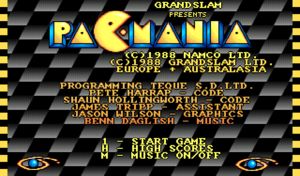
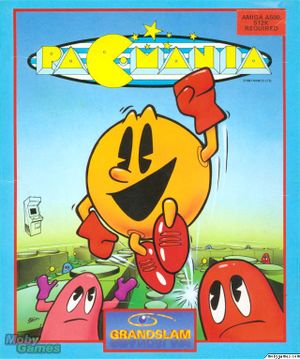
Developed and published by Grandslam Entertainment for Europe and Australasia in 1988. Very similar to the Acorn Archimedes version.
Acorn Archimedes[edit]

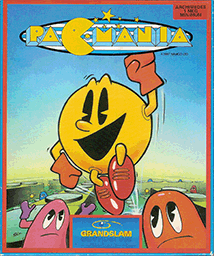
Developed and published by Grandslam Entertainment for Europe and Australasia in 1988. Later rereleased by Domark and Krisalis Software (as part of the Acorn A3000 model Learning Curve Pack) in 1991. Very similar to the Commodore Amiga version.
Commodore 64[edit]
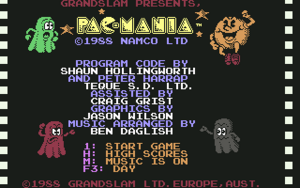

Developed and published by Grandslam Entertainment for Europe and Australasia in 1988.
Amstrad CPC[edit]
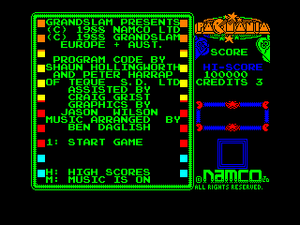
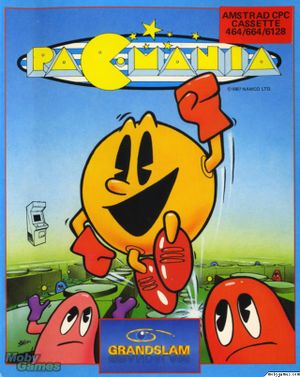
Developed and published by Grandslam Entertainment for Europe and Australasia in 1988. Very similar to the MSX and ZX Spectrum versions.
Sega Genesis[edit]
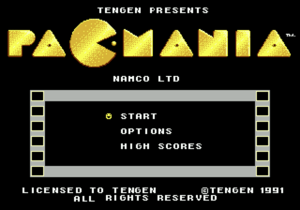

Developed by Sculptured Software and published by Tengen for the United States in 1991.
MSX[edit]


Developed and published by Grandslam Entertainment for Europe and Australasia in 1988. Very similar to the Amstrad CPC and ZX Spectrum versions.
Nintendo Entertainment System[edit]

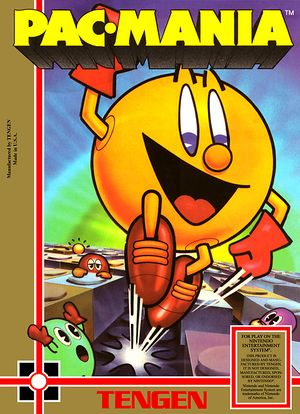
Developed and published by Tengen for the United States in 1990.
Sega Master System[edit]
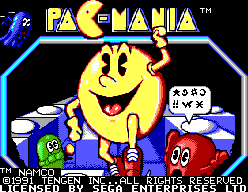
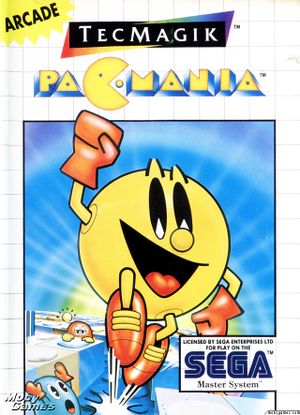
Developed by Tecmagik and published by Tengen for the United States in 1991.
Atari ST[edit]
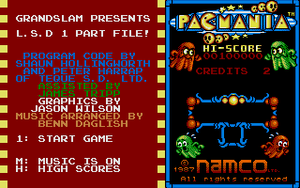

Developed and published by Grandslam Entertainment for Europe and Australasia in 1988.
Sharp X68000[edit]

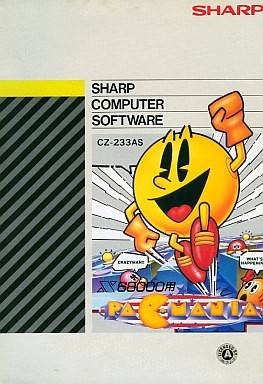
Developed and published by Namco themselves for Japan in 1989. Very similar to the original arcade version.
Sinclair ZX Spectrum[edit]

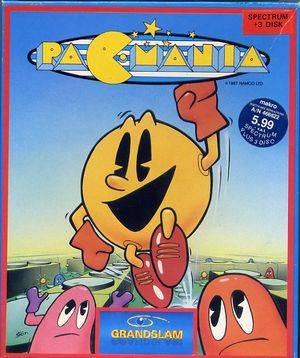
Developed and published by Grandslam Entertainment for Europe and Australasia in 1988. Very similar to the Amstrad CPC and MSX versions.
